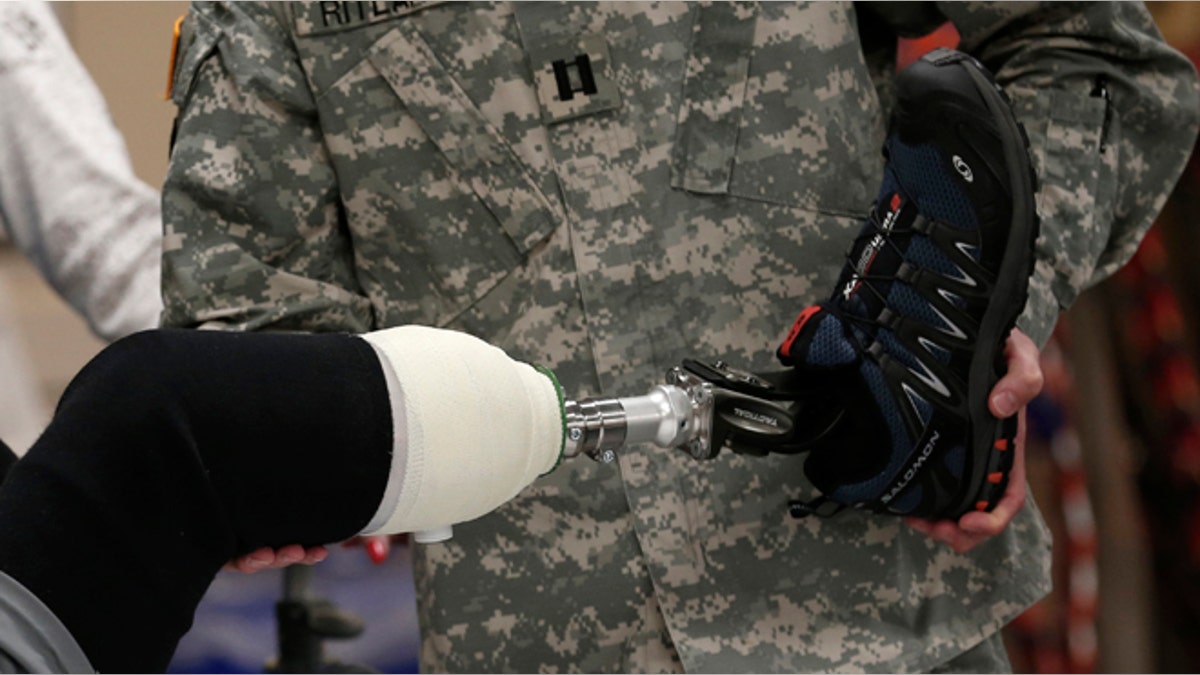
A wounded soldier receives treatment at a rehabilitation center at Walter Reed National Military Medical Center in Bethesda, Maryland, May 10, 2013. A new kind of technology may hold the key to prostheses that feel. (Reuters)
Over the past dozen years advances in prosthetics have enabled some troops who have lost use of a hand or lower part of a leg to continue to serve; some airborne soldiers have retained their jump status because of strong and sophisticated prosthetics.
But touch, feeling something coming into contact with the prosthesis, is something no one has regained – yet.
That soon could change with the development of an ultra-thin, featherweight electronic sensor foil that can be shaped or molded to any surface. The technology builds on other recent breakthroughs, including a flexible electronic circuit developed at the University of Illinois, Urbana-Champaign, that monitors body movements when applied to the skin.
RELATED: Brain implant designed for prosthesis
At the University of Tokyo, engineer Martin Kaltenbrunner is taking that technology to another level by developing bendable circuits than can be applied over large areas. The touch sensor foil Kaltenbrunner is developing is 2 micrometers thick (the width of a strand of spider web silk is anywhere from 3 to 8 micrometers) and is 27 times lighter than a sheet of office paper, according to Kaltenbrunner.
They are extremely flexible and can be crumpled like a tissue or conform to any object, he said, allowing them to be used in a variety of applications healthcare, mobile appliances and even in architecture and design. And that includes being applied to prosthetic limbs, effectively giving wearers a sense of feeling.
“I would definitely say that our technology can be of use to treat wounded or injured, as the main focus of our research lies on medical devices,” Kaltenbrunner said in an email to Defense Tech. “Artificial limbs or prosthetics could most certainly be equipped with our ultra thin sensor sheets, but I can imagine them as well to be worn by patients for post-operative monitoring and treatment.”
The hope, he said, is that extremely thin, flexible e-skins can be used as a way to monitor a patient’s heart, blood pressure, body temperature and more, or to place it near the site of a surgery or wound for post-operation follow-ups.
“The basic idea is to have a form of ‘smart’, unobtrusive batches that can tell the patient or the doctor more about his physical situation and the process of healing,” he said.
RELATED: Robot Arms: Not Just for the Jedi Anymore
Kaltenbrunner said he has not had any inquiries from the Department of Defense about the e-skin.
“I can imagine they would be interested in our research,” he said. “However, as far as I know, the University of Tokyo is not allowed to conduct military-funded research, so this might be a little complicated here. But I would believe that any research aimed at patient treatment will be fine.”




















